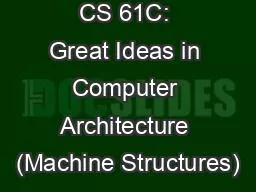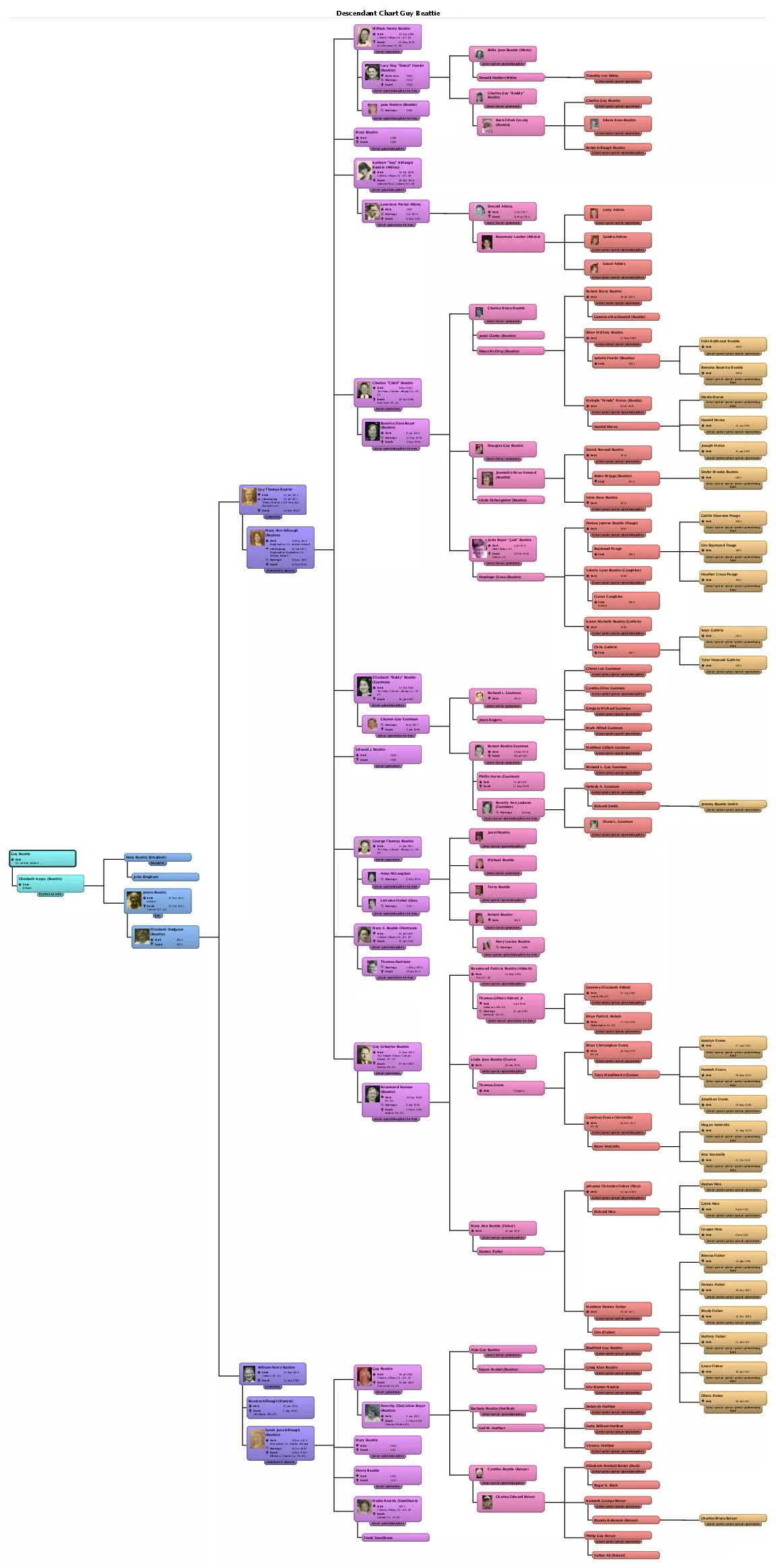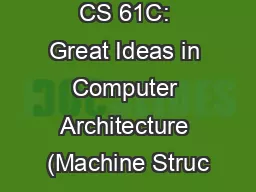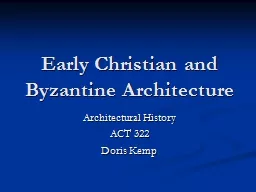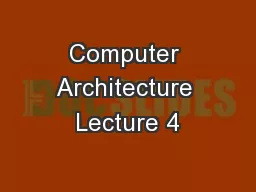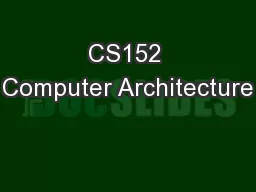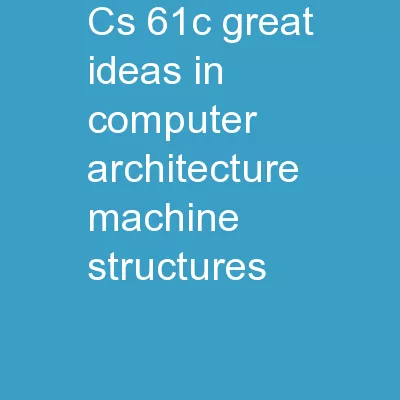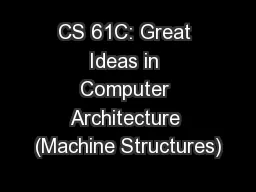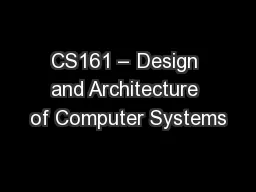PPT-CS 61C: Great Ideas in Computer Architecture (Machine Structures)
Author : ripplas | Published Date : 2020-08-06
Lecture 32 Pipeline Parallelism 3 Instructor Dan Garcia insteecsBerkeleyedu cs61c You Are Here Parallel Requests Assigned to computer eg Search Katz Parallel Threads
Presentation Embed Code
Download Presentation
Download Presentation The PPT/PDF document "CS 61C: Great Ideas in Computer Architec..." is the property of its rightful owner. Permission is granted to download and print the materials on this website for personal, non-commercial use only, and to display it on your personal computer provided you do not modify the materials and that you retain all copyright notices contained in the materials. By downloading content from our website, you accept the terms of this agreement.
CS 61C: Great Ideas in Computer Architecture (Machine Structures): Transcript
Download Rules Of Document
"CS 61C: Great Ideas in Computer Architecture (Machine Structures)"The content belongs to its owner. You may download and print it for personal use, without modification, and keep all copyright notices. By downloading, you agree to these terms.
Related Documents

